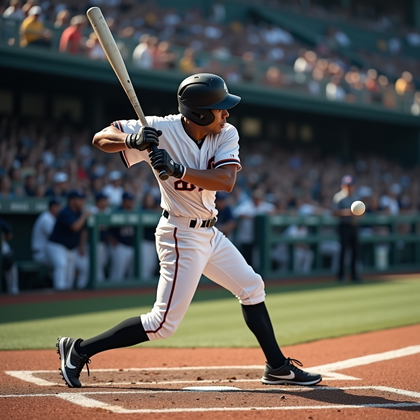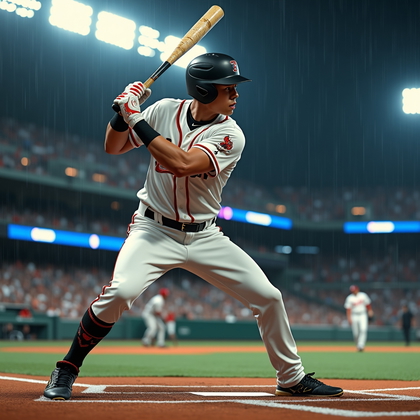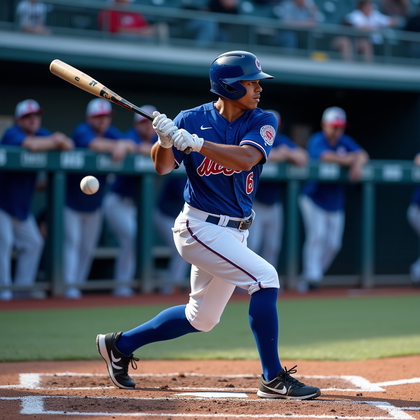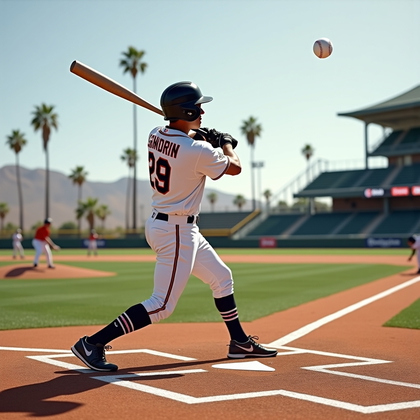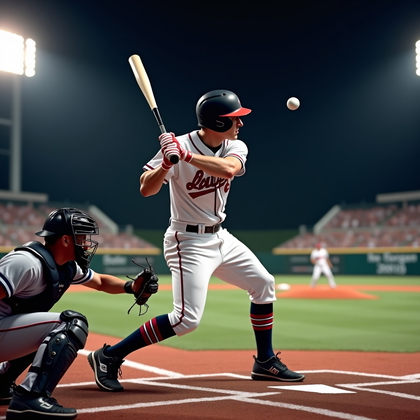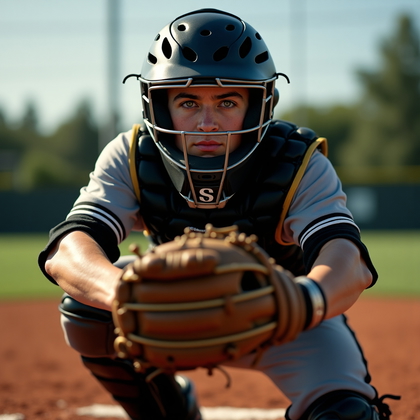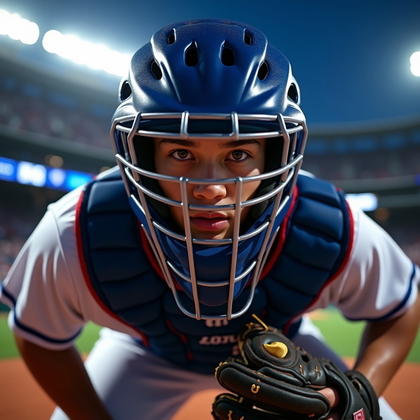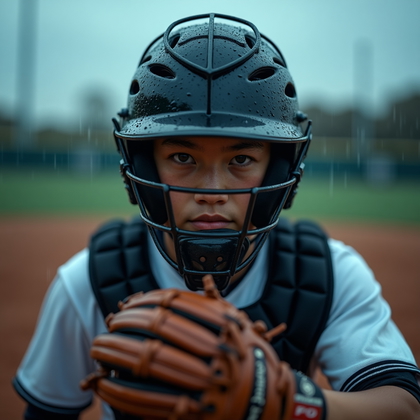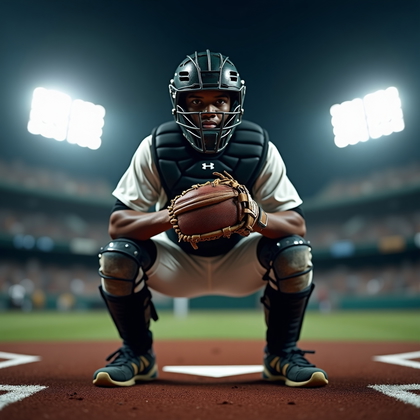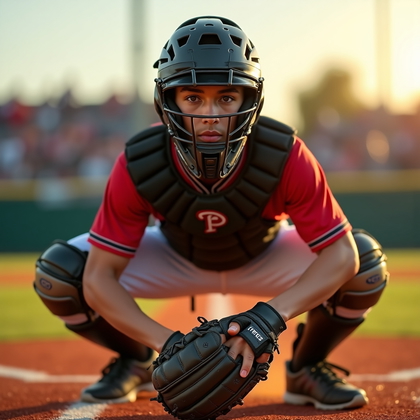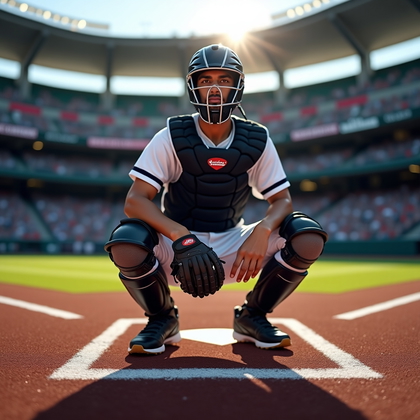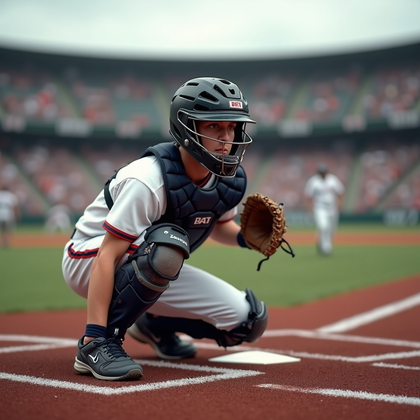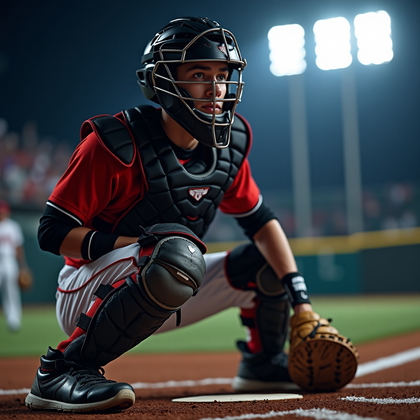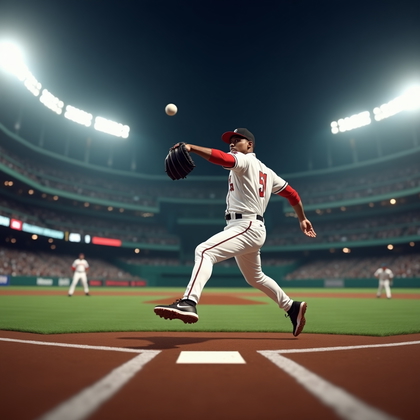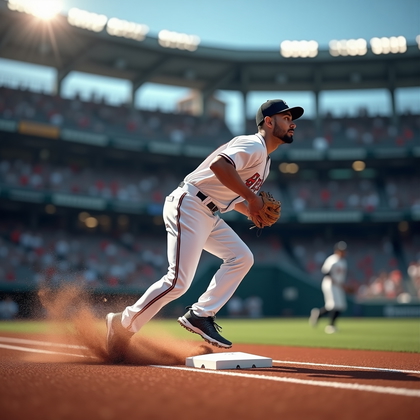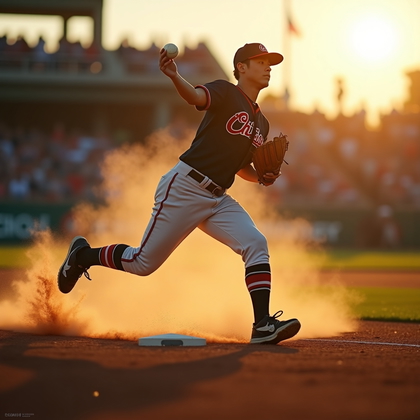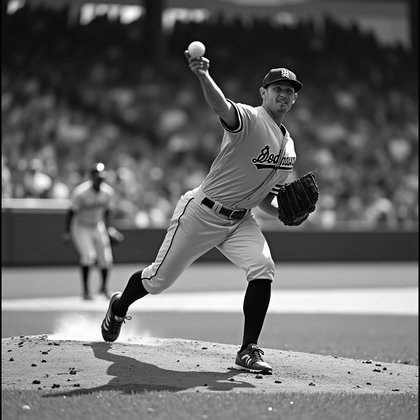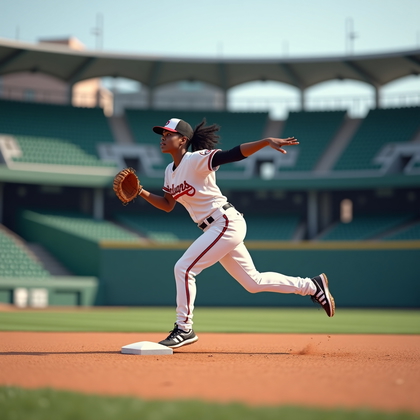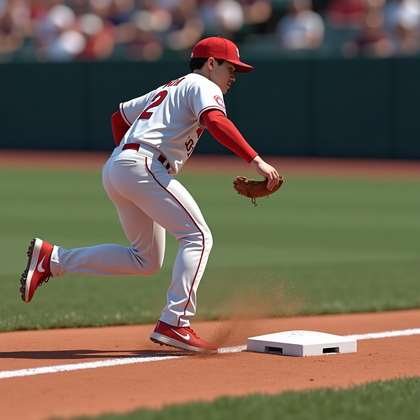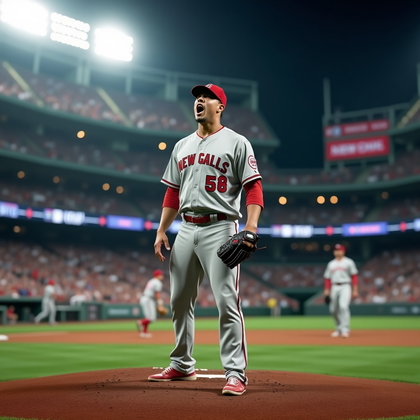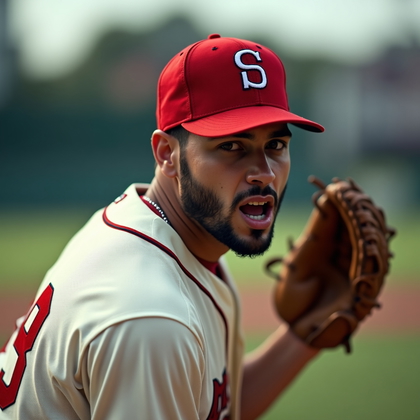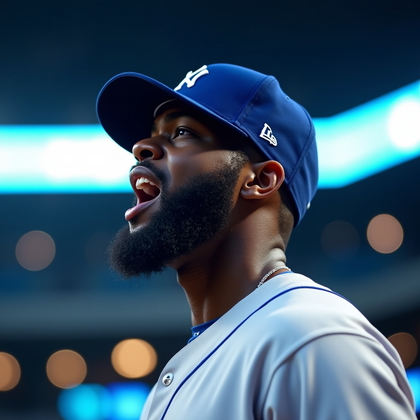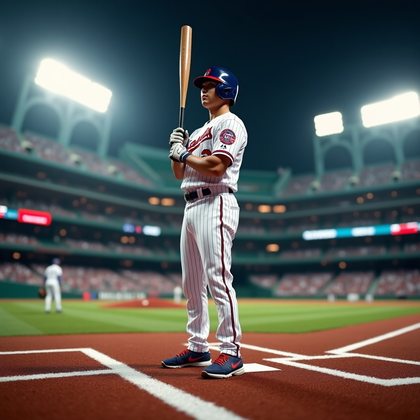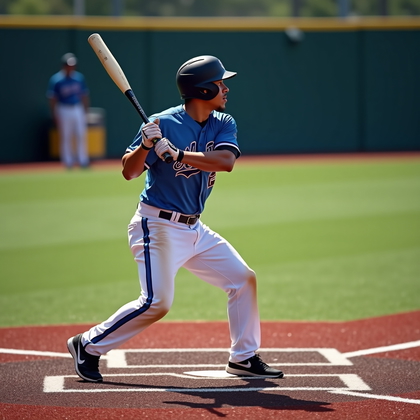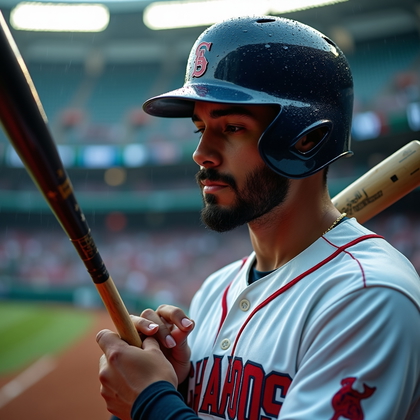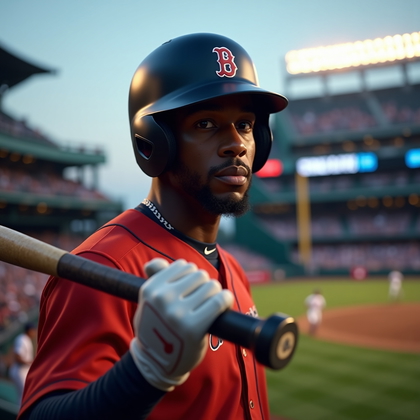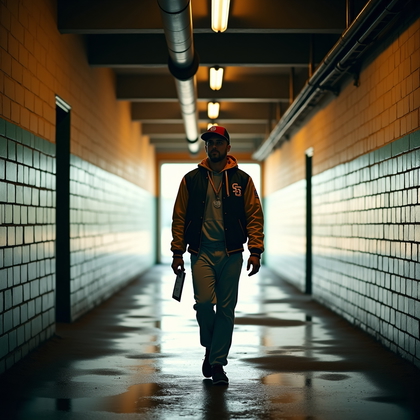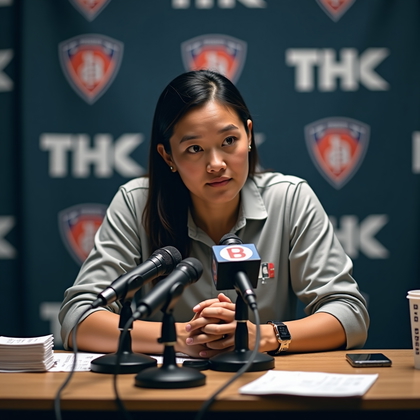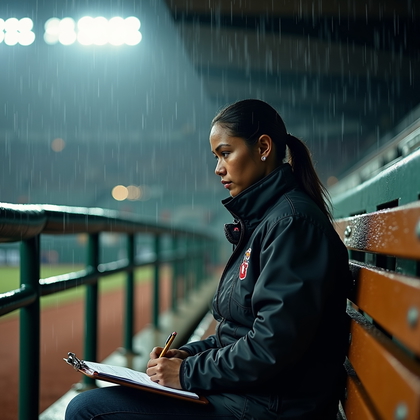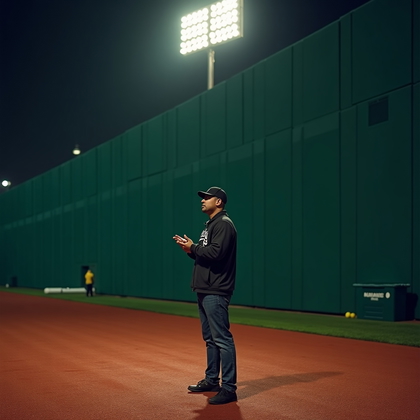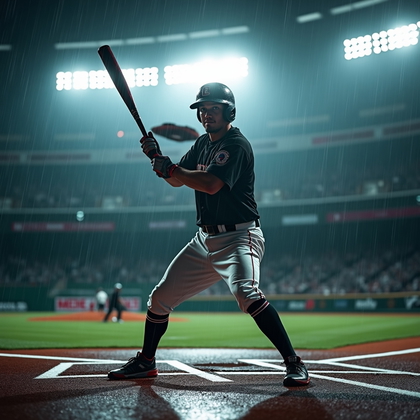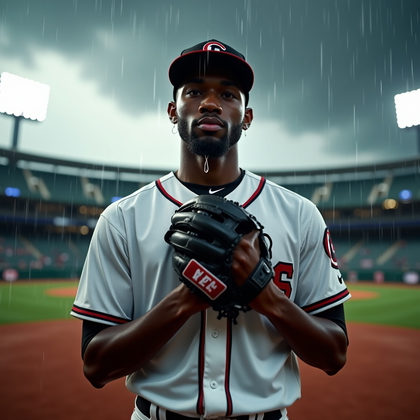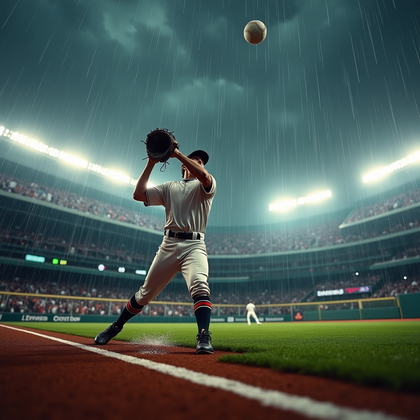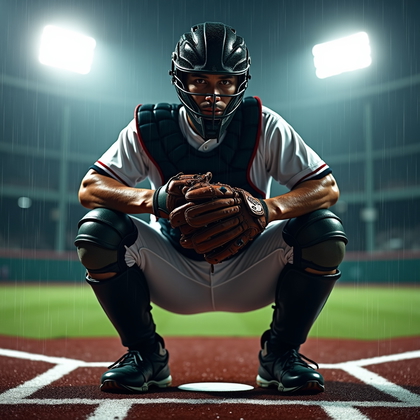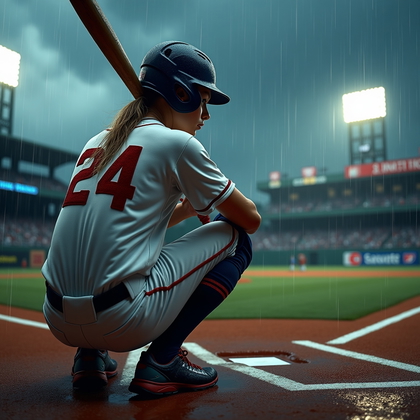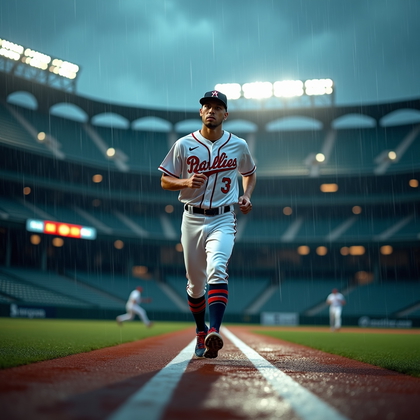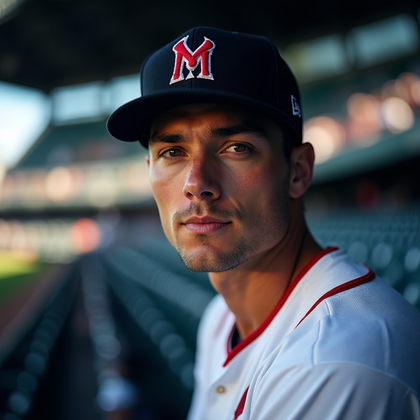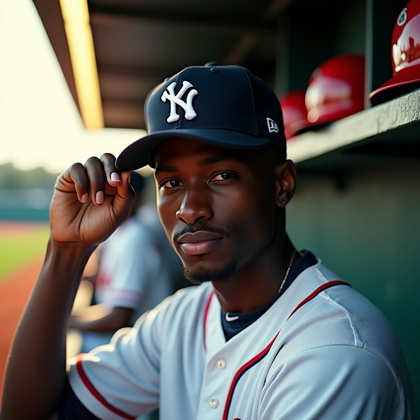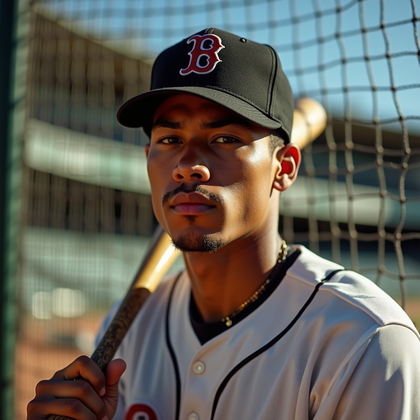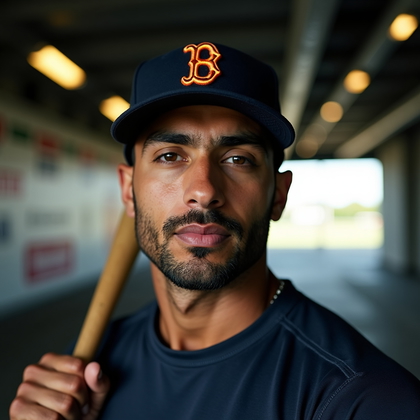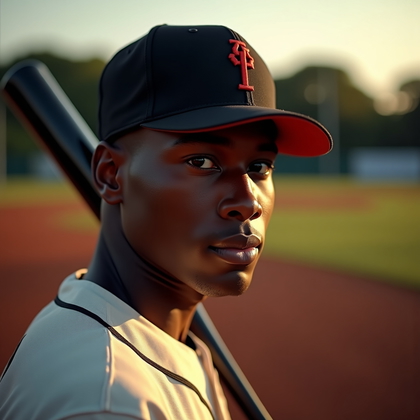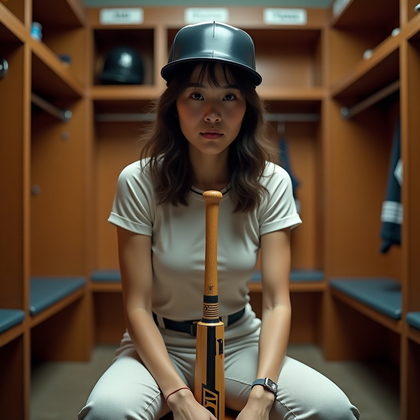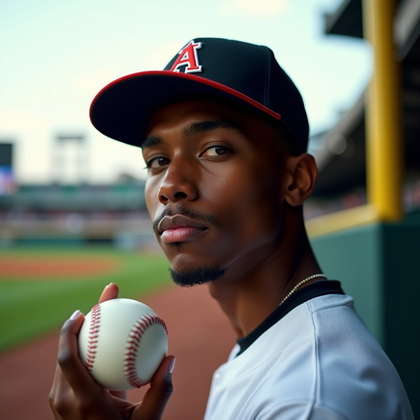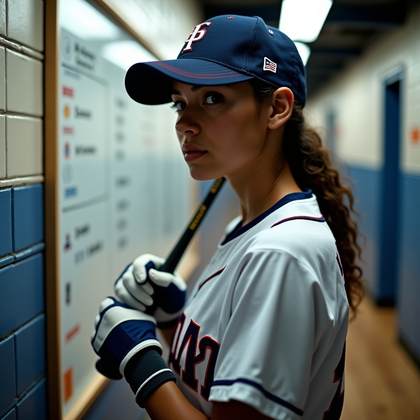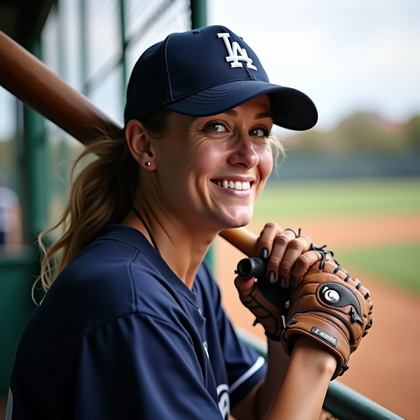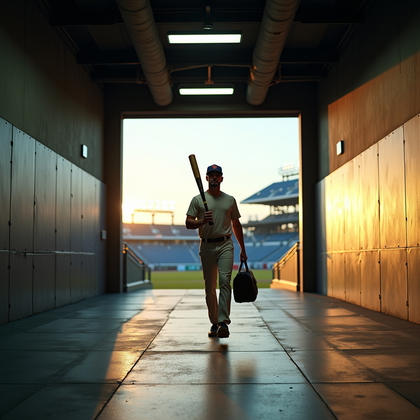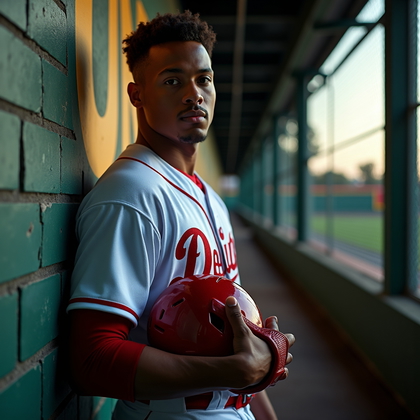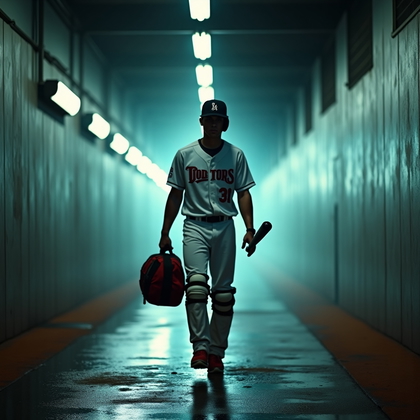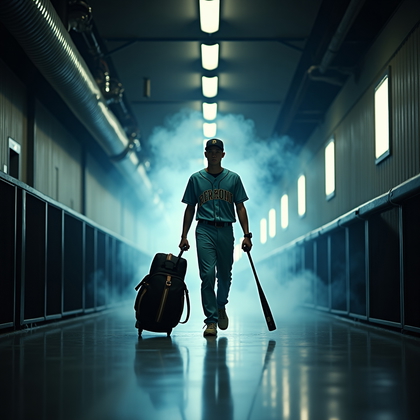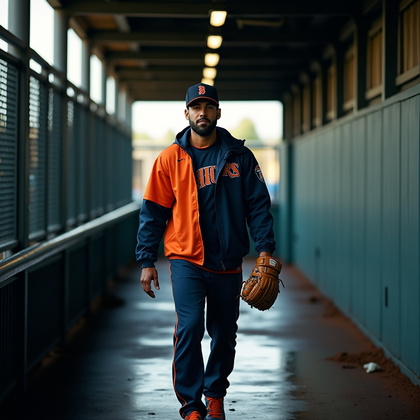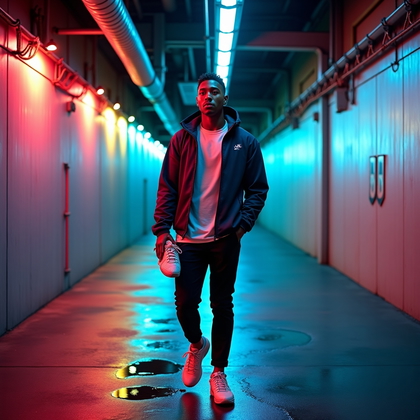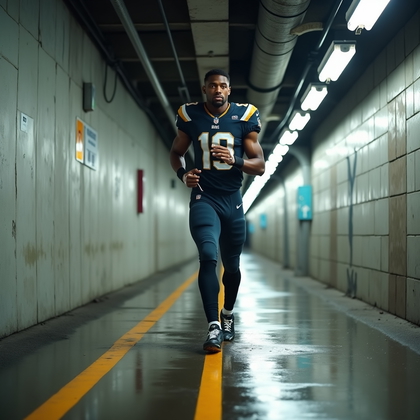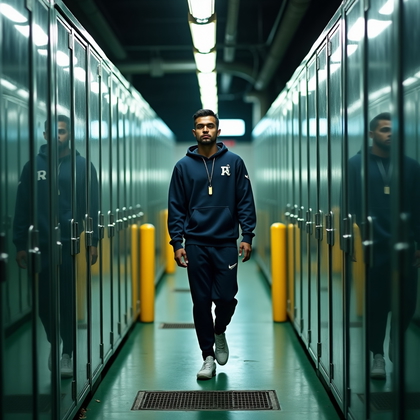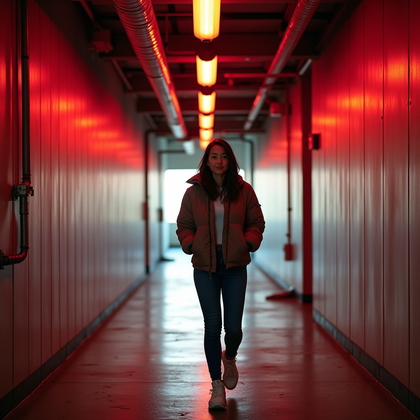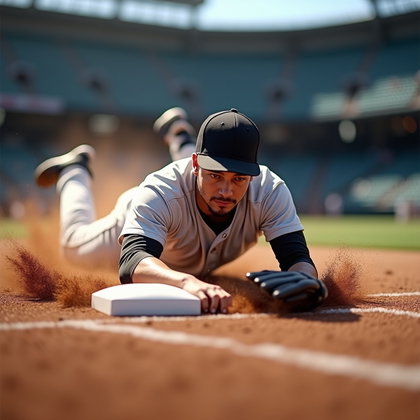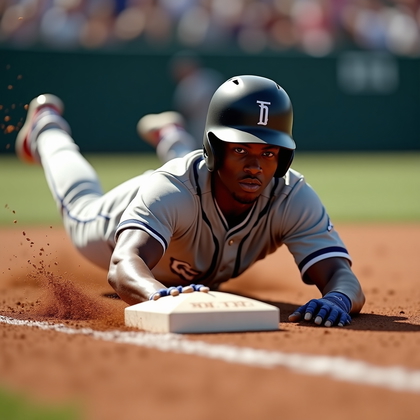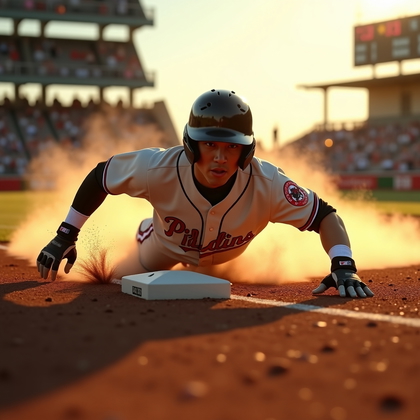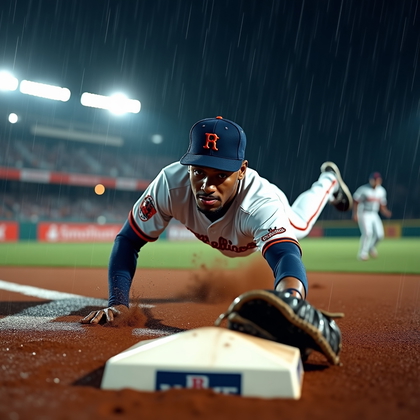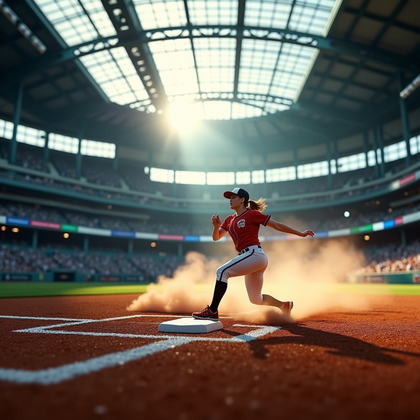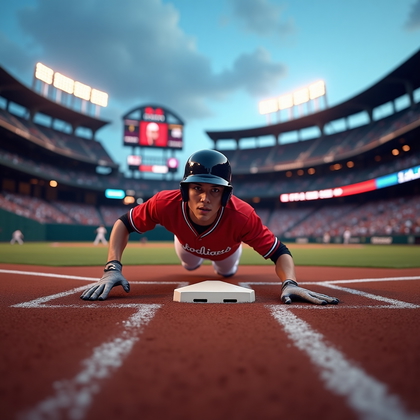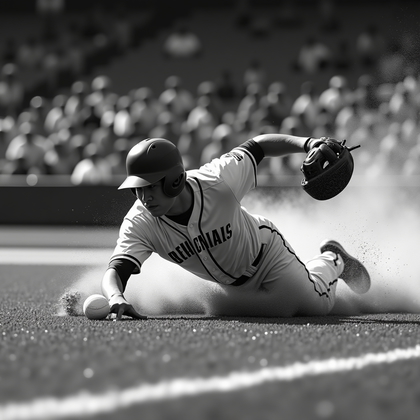MLB Photos
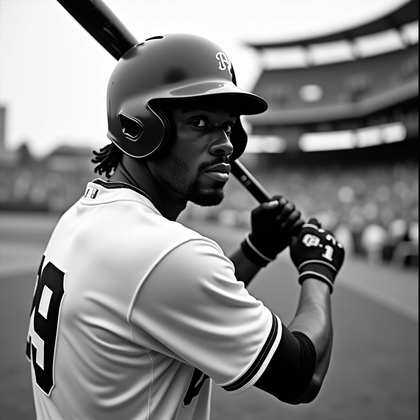
Want AI baseball shots that hit hard, look real, and sell the action? Want images with dirt spray, ball in frame, and emotion that punches?
AI photo generation turns text into images. You control angle, lens look, light, action timing, and detail. You can simulate high-speed sports cameras. You can push grit. You can make clean frames with the ball, sweat, and texture.
This guide gives you the exact builds for elite MLB-style images. You get what works. You get action timing, lens choices, light control, and pose cues. Use these sections to generate pro-level shots fast.
Base-Stealer Headfirst Explosion
This shot wins with violence, speed, and ground detail. You want dirt pellets, chalk burst, and fingers stretching to the bag. Go low angle. Put the base front-right or front-left. Freeze the slide with a fast shutter look. Add motion streaks in the background only. Keep the face intense and visible if the helmet brim allows.
Use hard sidelight for grit on the forearms and jersey. Add back rim light for dirt sparkle. Keep the background blown into soft bokeh. Do not center the body. Offset the athlete and let the dirt trail fill the frame. Make the tag arm or hand sharp. This sells impact.
Click on any photo to see how you'd look
Prompt blueprint: headfirst slide to second, low angle, 300mm look, f/2.8 bokeh, 1/2000s freeze, dirt spray pellets, chalk burst, fingers stretching to bag, stadium rim light, sweat, gritty texture, shallow depth, compressed background.
Settings that work: telephoto perspective, backlight plus side fill, contrast +20, clarity +15, add particles and flying dirt with high detail.
Avoid: wide angle distortion, clean uniforms, flat light, centered subject.
Slugger Follow-Through With Ball in Frame
The winning element is timing. Place the ball in frame at the edge of the bat path or early flight. Show bat bend, wrist roll, and hip rotation. Use a mid-tele angle from the first-base camera well. Keep the pitcher mound blurred. Push the crowd into soft shapes.
Use golden hour or stadium arcs for punchy highlights on the bat and forearms. Add slight motion blur to the bat tip only. Keep the eyes visible under the brim if you can. Capture chalk off the plate and rosin dust in the air. This sells power and contact.
Click on any photo to see how you'd look
Prompt blueprint: power hitter follow-through, ball visible mid-flight, 200mm look, f/2.8, 1/2000s, bat motion blur at tip, strong rim light, plate chalk dust, muscular forearms, stadium bokeh, peak rotation.
Settings that work: contrasty side light, low vantage, ball sharp, bat tip slight blur, saturation restrained.
Avoid: no ball in frame, flat pose, dead center framing.
Catcher Eyes-Through-Mask Crouch
The eyes sell this shot. You want sharp pupils through the mask bars. Use a low, frontal angle. Compress the mask geometry with a long lens look. Keep chest protector texture crisp. Add chalk on the knees. Add rosin haze behind to create depth.
Use controlled backlight for a halo on the helmet and mask edges. Keep the background dark and muted. Let the glove sit near edge of frame to imply readiness. This shot works because it shows focus and gear detail with clean contrast.
Click on any photo to add your face
Prompt blueprint: catcher crouch, eyes locked through mask, 300mm telephoto look, f/2.8 shallow DOF, 1/1250s, hard back rim light, dark dugout bokeh, leather glove grain, helmet scuffs, crisp eyes.
Settings that work: tight head-and-chest framing, high micro-contrast on metal bars, subtle sweat highlights.
Avoid: wide angle warping, bright busy background, dull eyes.
Shortstop Airborne Turn-and-Throw
Get the body airborne with both feet off the dirt. Show the twist of the torso and the ball leaving the fingers. Place the runner blur in the far background only. Keep the infield dirt texture sharp around the plant foot area. Freeze small dirt flecks for speed.
Use strong side light to carve muscles and jersey folds. Frame from second-base side for a clean angle to first. Keep the ball sharp and close to the throwing hand. This sells athleticism and precision.
Click on any photo to make it yours
Prompt blueprint: shortstop jump throw, mid-air, ball just released, 200–300mm look, f/2.8, 1/2000s, dirt flecks frozen, side light for muscle definition, stadium bokeh, dynamic twist, clean background.
Settings that work: low angle, rule-of-thirds placement, emphasize hand, ball, eyes triangle.
Avoid: feet on ground, no ball in frame, cluttered infield behind subject.
Closer’s Final-Pitch Roar
This image lives on emotion. Focus on the face and the clenched fists. Keep veins, sweat, and jersey texture clear. Use a long lens look to flatten the background. Add breath vapor on cold nights or heat shimmer on hot nights to amplify mood.
Light from behind and slightly above for a strong rim. Let the front light be subtle so the eyes still read. Keep the mound and rubber slightly visible but soft. The roar sells impact when the pose fills the frame.
Click on any photo to step into the scene
Prompt blueprint: closer victory roar, 200mm tele look, f/2.8 shallow, 1/1000s, dramatic back rim light, sweat droplets, clenched fists, subtle stadium glow bokeh, intense eyes, compressed background.
Settings that work: tight crop chest-up, high contrast, micro-detail on skin and jersey seams.
Avoid: wide full-body shot, flat light, weak expression.
On-Deck Routine Focus
Show ritual, not swing. Capture the batter tapping the plate, adjusting gloves, or timing the pitcher. The benefit is a calm frame with intent. Use shallow depth. Keep the bat on shoulder or held loose with pine tar texture visible. Let the field sit soft in the background.
Use side light for clean skin texture and gear detail. Add chalk marks on the on-deck circle. Keep the eyes looking downrange. This shot sells preparation and mental lock-in.
Click on any photo to step into the scene
Prompt blueprint: hitter on-deck routine, quiet focus, 135–200mm look, f/2.0–2.8, 1/1000s, side light, glove adjustment, bat pine tar detail, chalked on-deck circle, stadium bokeh.
Settings that work: mid-shot waist-up, soft background color, fine texture on tape and laces.
Avoid: crowd in focus, messy horizon lines, forced smile.
Manager Lock-In
The manager shot wins with eyes and posture. Capture a firm jaw, headset or cap detail, and a forward lean at the dugout rail. Use shallow depth to fade players behind. Keep the dugout top edge as a strong line.
Use hard side light for facial structure. Add slight grain for a documentary feel if needed. Keep logos vague. Focus on expression and decision energy. This keeps the image timeless and clean.
Click to create your version
Prompt blueprint: manager at dugout rail, intense gaze, 85–135mm look, f/2.0, 1/500s, side light for cheekbone contrast, muted dugout background, subtle film grain, cap brim edge light.
Settings that work: tight head-and-shoulders crop, low saturation, crisp eyes.
Avoid: busy background text, flat front lighting, wide angle distortion.
Weather Warrior in the Rain
Rain sells drama. Use backlight to ignite each raindrop. Keep the athlete sharp. Add wet jersey cling, water beads on the helmet, and streaks on the arms. Use a fast shutter look to freeze drops, or a controlled 1/500s look to show streaks. Both work.
Keep background dark for contrast. Add puddle splash at the feet. Do not overdo fog. Subtle mist near the lights is enough. The water texture plus grit makes this image feel real.
Click on any photo to make it yours
Prompt blueprint: player in heavy rain, 200mm look, f/2.8, 1/1000s freeze or 1/500s streaks, strong back rim light, wet uniform texture, water droplets, dark stadium background, splash at feet.
Settings that work: high contrast, clarity on droplets, minimal haze, color temperature slightly cool.
Avoid: flat front light, fake fog walls, messy highlights on skin.
Star Pre-Game Portrait Under the Brim
This is a style shot. Put the brim shadow across the eyes but keep catchlights visible. Use a tight portrait angle. Show subtle skin detail, stubble, and stitch texture on the cap. Backdrop should be soft dugout or tunnel. Keep color simple and clean.
Use one key light plus a small kicker. Push the jawline. Keep the expression calm but strong. This shot works because it looks controlled and elite. It pairs well with monochrome too.
Click on a photo to try this look
Prompt blueprint: pre-game portrait, cap brim shadow, 85mm look, f/1.8 shallow, controlled key light, faint kicker rim, clean background, high detail skin, crisp cap stitching, subtle catchlight.
Settings that work: tight crop, low noise, neutral color, micro-contrast on fabric.
Avoid: harsh fill light, busy backgrounds, wide angle face distortion.
Rookie Tunnel Walk
Lead with shape and light. Use tunnel leading lines that converge behind the subject. Place the light source behind for a bright exit glow. Keep the jersey and bag or bat visible. Add light haze for depth, not fog.
Shoot low for power. Keep the rookie mid-frame walking toward camera. Use slow shutter look for a subtle foot motion blur, but keep the face sharp. This creates a strong entrance feel.
Click on any photo to see yourself here
Prompt blueprint: rookie walking through stadium tunnel, back glow, 35–85mm look, f/2.0, subtle haze, leading lines, slight foot motion blur, face sharp, duffel or bat in hand, dramatic light gradient.
Settings that work: low angle, centered or near-center composition, vignetting for focus.
Avoid: flat corridor light, cluttered signage, full blur on subject.
Conclusion
AI sports images work when you control timing, angle, and light. Put the ball in frame when action demands it. Push backlight for particles, sweat, and rain. Use long-lens looks for compression and clean bokeh. Keep expressions real and strong.
Build each shot with a clear focal point and one story: speed, power, focus, grit, or calm. Add texture, control backgrounds, and avoid clutter. Use these blueprints, and you will generate believable MLB-style images that hit hard and look pro. Keep it sharp. Keep it simple. Make every frame count.

